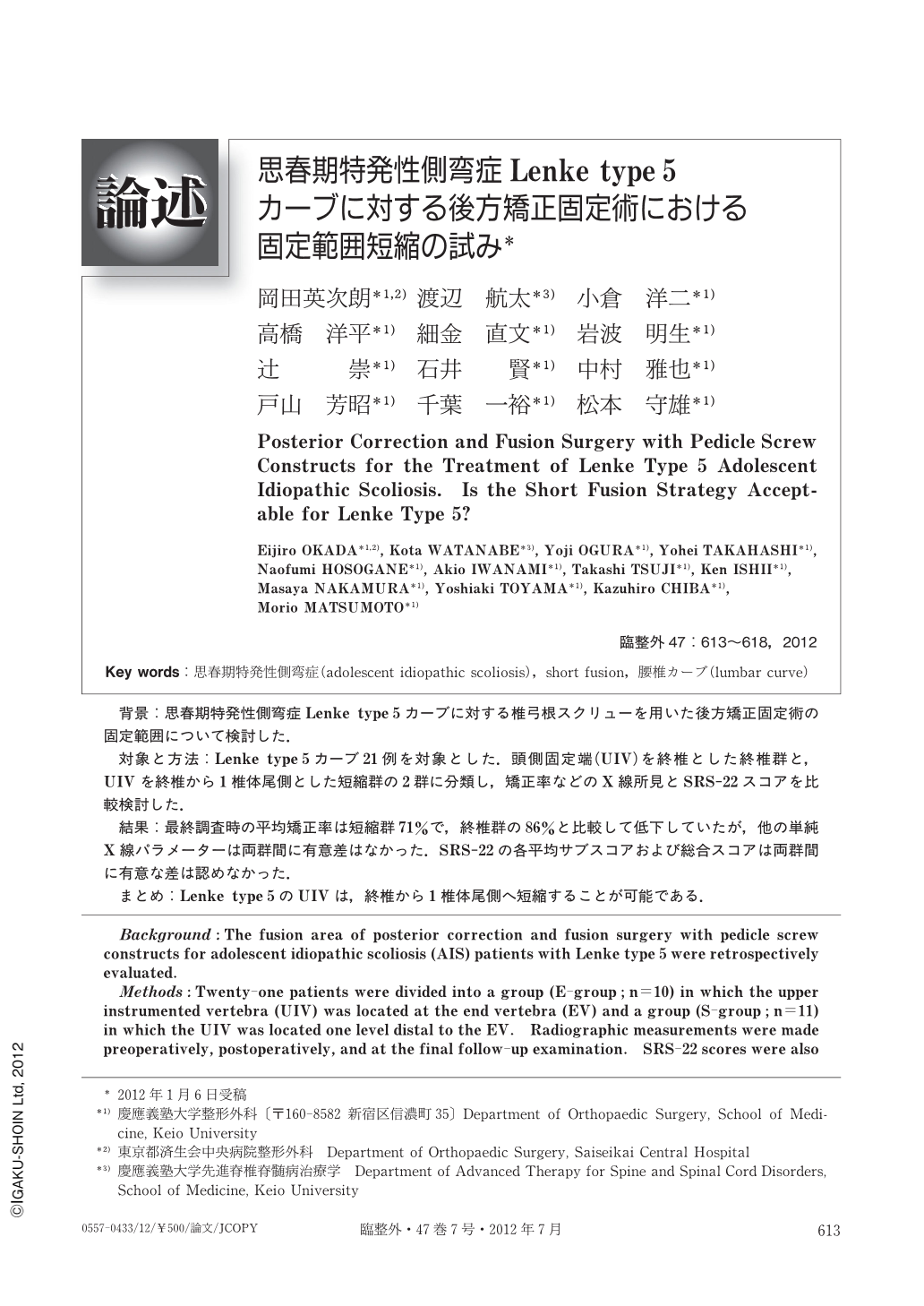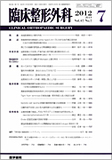Japanese
English
- 有料閲覧
- Abstract 文献概要
- 1ページ目 Look Inside
- 参考文献 Reference
背景:思春期特発性側弯症Lenke type5カーブに対する椎弓根スクリューを用いた後方矯正固定術の固定範囲について検討した.
対象と方法:Lenke type5カーブ21例を対象とした.頭側固定端(UIV)を終椎とした終椎群と,UIVを終椎から1椎体尾側とした短縮群の2群に分類し,矯正率などのX線所見とSRS-22スコアを比較検討した.
結果:最終調査時の平均矯正率は短縮群71%で,終椎群の86%と比較して低下していたが,他の単純X線パラメーターは両群間に有意差はなかった.SRS-22の各平均サブスコアおよび総合スコアは両群間に有意な差は認めなかった.
まとめ:Lenke type5のUIVは,終椎から1椎体尾側へ短縮することが可能である.
Background:The fusion area of posterior correction and fusion surgery with pedicle screw constructs for adolescent idiopathic scoliosis (AIS) patients with Lenke type5 were retrospectively evaluated.
Methods:Twenty-one patients were divided into a group (E-group;n=10) in which the upper instrumented vertebra (UIV) was located at the end vertebra (EV) and a group (S-group;n=11) in which the UIV was located one level distal to the EV. Radiographic measurements were made preoperatively, postoperatively, and at the final follow-up examination. SRS-22 scores were also evaluated.
Result:The mean correction rate in the S-group examination (71%) at the final follow-up was significantly lower than in the E-group (86%) (p=0.010). However, the values of other radiographic parameters, including coronal balance, sagittal balance, lumbar lordosis, and thoracic kyphosis, did not significantly differ between the two groups. The mean SRS-22 scores were not significantly different either.
Conclusion:Since there were no significant differences between the two groups in the values of any of the radiographic parameters, except the correction rate, or in their SRS-22 scores, selection of UIV at one level distal to EV is a reasonable alternative to the conventional method of posterior correction surgery for Lenke type 5 curves.

Copyright © 2012, Igaku-Shoin Ltd. All rights reserved.


